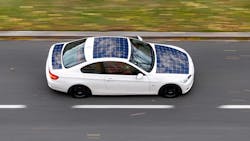What Can the Solar Revolution Tell Us About the EV’s Future? (Download)
Although electric-vehicle (EV) technologies are receiving lots of attention these days, some industry skeptics are still unsure if they will ever replace internal combustion engines (ICE) in most automotive applications. And if they do, will the transition be measured in years or decades?
While the rate of this transition depends on a complex mix of economic, social, and political factors that are nearly impossible to quantify, it may be possible to make an educated guess about when EVs will go mainstream. This is based on what we know about how solar electric power went from being a fringe technology to a major force in the global energy market.
